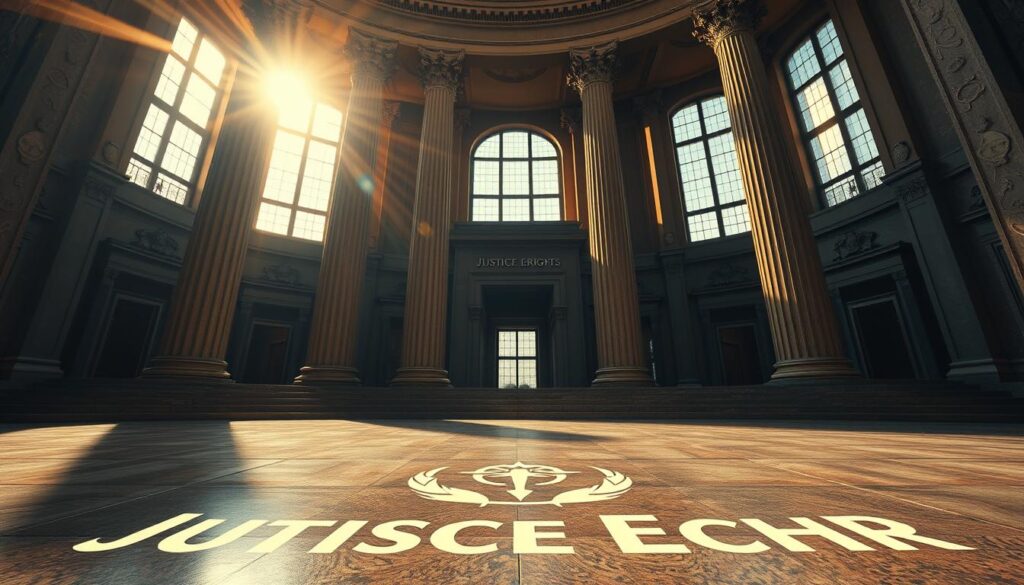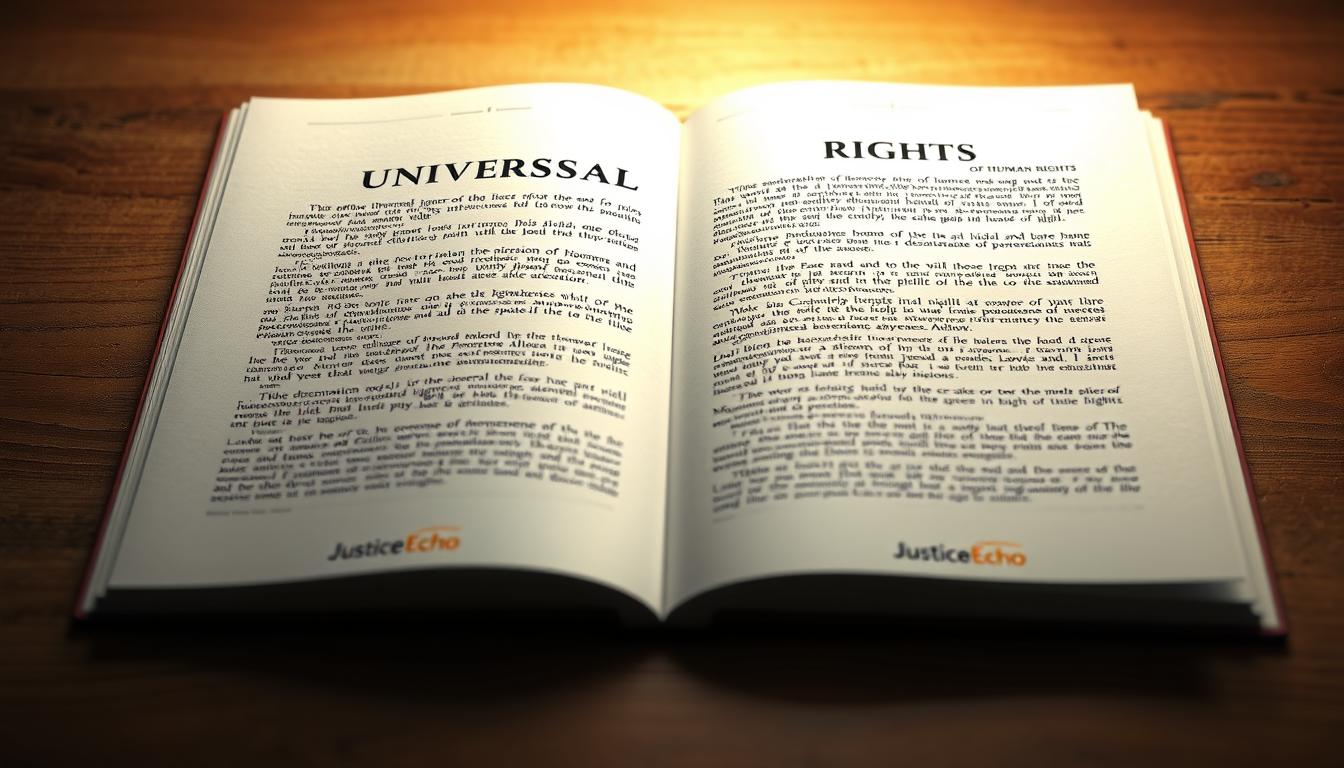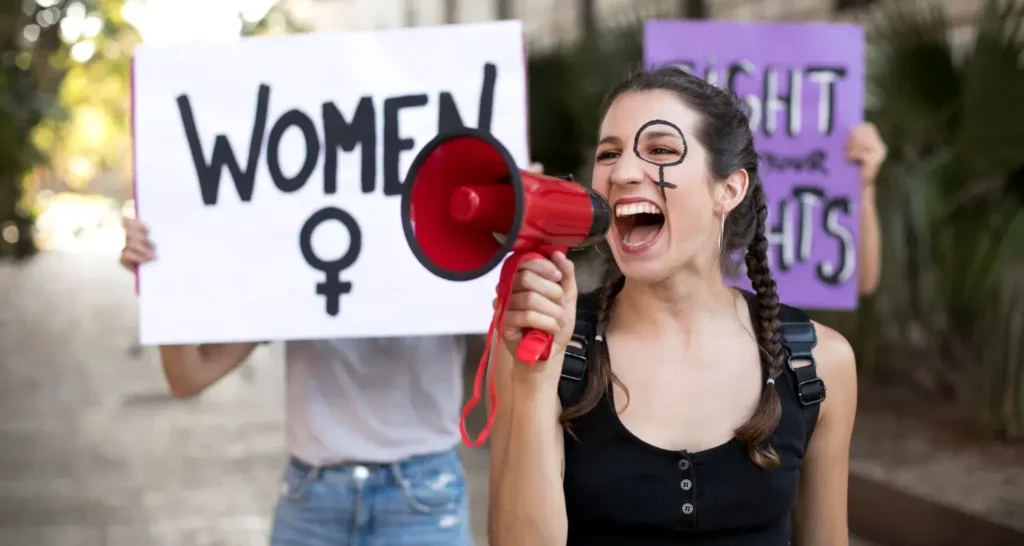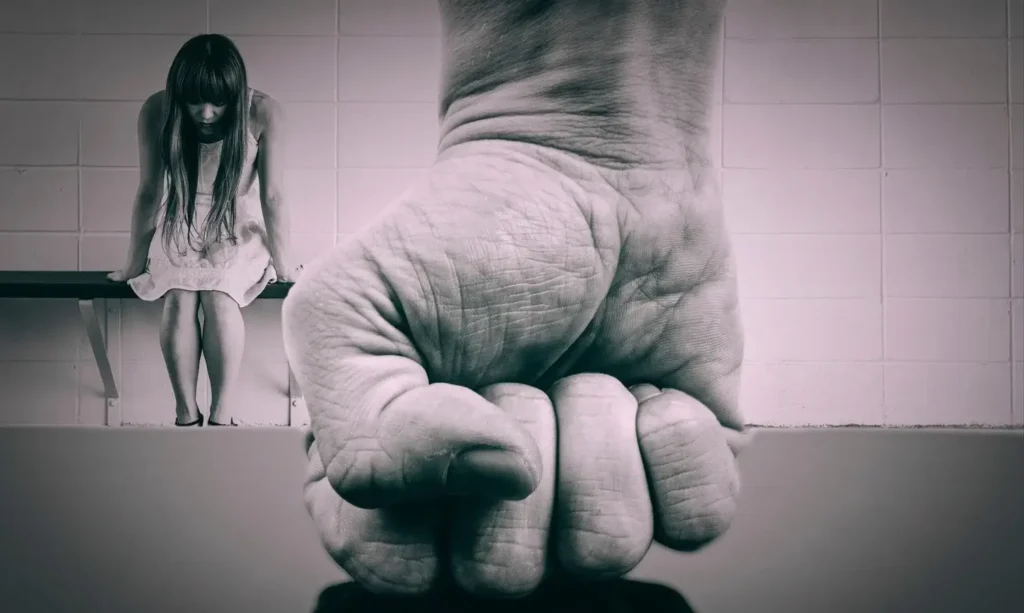Imagine a world without guaranteed human rights. A place where dignity, freedom, and justice were unsure. The Universal Declaration of Human Rights (UDHR) brought hope, changing how we see civil liberties and social justice globally.
On December 10, 1948, in Paris, the UDHR was adopted. It marked a key moment in history. 48 United Nations member states voted unanimously, creating a document that changed how we view individual freedoms.
Your human rights are more than just words. They promise equality, respect, and protection for everyone. The UDHR shows our shared commitment to social justice and human dignity.
Key Takeaways
- Adopted on December 10, 1948, by the UN General Assembly
- Encompasses 30 articles detailing individual rights and freedoms
- Translated into 530 languages worldwide
- Unanimously supported by 48 UN member states
- Foundational document for modern human rights standards
Understanding the Historical Background of UDHR
The Universal Declaration of Human Rights came out of the darkest times in history. After World War II, the world saw terrible acts that called for a global effort to protect human dignity. These acts showed deep problems of discrimination and inequality, pushing leaders to make a plan for human rights for everyone.
The world was at a turning point after the war. Leaders saw the need to change how countries relate to each other. They wanted to make sure everyone’s basic rights were protected to avoid more disasters.
The Global Turning Point
World War II’s end was a chance for the world to change. Important steps included:
- Unanimous adoption of the UDHR on December 10, 1948
- Representation from 48 UN member states
- Commitment to preventing future human rights violations
Eleanor Roosevelt’s Transformative Leadership
Eleanor Roosevelt was key in writing the declaration. Her leadership helped push for human rights and brought different views together. She knew fighting discrimination needed everyone’s help.
“Where, after all, do universal human rights begin? In small places, close to home.”
UN Commission on Human Rights
The UN Commission on Human Rights was vital in making the declaration. This group worked hard to make a document that showed the world’s views while keeping human dignity at its core.
| Key Contributors | Country | Role |
|---|---|---|
| John Humphrey | Canada | Draft Preparation |
| René Cassin | France | Legal Framework |
| Chang Peng-chun | China | Philosophical Input |
The declaration is a big win for recognizing everyone’s rights and equality. It goes beyond culture, politics, and geography.
The Fundamental Principles of Human Rights
The Universal Declaration of Human Rights (UDHR) is a major step towards protecting everyone’s dignity and freedom. It was adopted on 10 December 1948. This document has 30 articles that set the standard for human rights everywhere.
The UDHR focuses on key principles to protect human dignity. It supports important freedoms like:
- Freedom of expression
- Right to life and personal security
- Equal protection under the rule of law
- Protection from discrimination
- Right to education and work
Your personal freedoms are safeguarded by important rules. The rule of law makes sure governments respect human rights.
Each article in the UDHR is a promise to uphold human dignity. It has led to over 60 human rights agreements and shaped laws worldwide.
“All human beings are born free and equal in dignity and rights.”
The UDHR goes beyond borders, setting a global standard for human rights. It has been translated into over 530 languages. It speaks to people’s hopes for justice, respect, and freedom.
Structure and Articles of the UDHR
The Universal Declaration of Human Rights (UDHR) is a key document that covers basic human rights. It was adopted by 48 countries in December 1948. This declaration has a Preamble and 30 articles that protect our freedoms and ensure justice.

The UDHR is at the heart of protecting women’s and children’s rights. It is organized to tackle different parts of human dignity and freedom.
Preamble and Basic Concepts
The Preamble sets the tone by talking about universal human dignity. It highlights the value of every person, no matter their gender, nationality, or social status.
Individual Rights and Freedoms
- Articles 3-21 cover important civil and political rights
- They protect personal freedoms and basic rights
- They ensure everyone is treated equally under the law
- They prevent discrimination
Social and Economic Rights
Articles 22-27 deal with key social and economic rights, including:
- The right to work
- The right to education
- The right to social security
- The right to take part in cultural life
The UDHR has led to over 70 human rights treaties. It shows its big impact on the world in protecting women’s and children’s rights. Its detailed approach keeps human dignity central in international law.
The Drafting Process and Key Contributors
The Universal Declaration of Human Rights was created by a team of brilliant minds from all over the world. This effort was a true example of human rights and equality. It shows how important it is to work together.
Many key people helped shape this important document. The team included leaders from different parts of the world:
- John Humphrey from Canada, who wrote the first draft
- René Cassin from France, who was the main thinker behind it
- Eleanor Roosevelt, who led the team with great leadership
- Chang Peng-chun, who helped make important decisions
- Charles Habib Malik, who had a big impact on the debates
The process of creating the document was complex. The team had to deal with the challenges of the Cold War. They had to find a balance between different ideas.
They worked together to make sure the declaration was for everyone. By bringing in views from different cultures and politics, they made a document that spoke to everyone’s dignity.
The Universal Declaration of Human Rights represents humanity’s collective aspiration for justice and equality.
In the end, the team’s dedication to human rights led to a document that has changed the world. It continues to inspire people to fight for justice and dignity everywhere.
Legal Status and International Impact
The Universal Declaration of Human Rights (UDHR) is a key moment in setting global human rights standards. It’s not legally binding in the usual way. Yet, it has deeply influenced international law and the rule of law.
The declaration’s legal importance comes from its big impact on laws worldwide. Many countries have put UDHR principles into their laws. This has helped build a strong base for social justice.
Implementation in National Laws
Many countries have made the UDHR a key part of their legal changes. Important steps include:
- Changing laws to protect human rights
- Setting up national human rights commissions
- Using UDHR ideas in court decisions
Influence on International Treaties
The UDHR has led to important global legal agreements. Its ideas have helped create treaties that protect people’s rights in many areas.
- International Covenant on Civil and Political Rights
- International Covenant on Economic, Social and Cultural Rights
- Convention Against Torture
Global Human Rights Standards
The UDHR set up universal standards for judging how countries act. Its ideas help guide talks on the rule of law and social justice. They push for accountability and dignity everywhere.
“Human rights are universal, indivisible and interdependent” – United Nations
Universal Rights and Cultural Perspectives

Understanding human rights in different cultures is a big challenge. The Universal Declaration of Human Rights (UDHR) tries to create a global standard. It aims to respect human dignity and honor cultural diversity.
Cultural views can shape how we see basic rights. For example, in some cultures, the community’s needs come first. This can clash with the Western focus on individual freedom.
- Collectivist cultures emphasize community needs
- Individual rights may conflict with traditional cultural values
- Intercultural dialogue is key for understanding human rights
Seeing human dignity through different cultures is complex. Discrimination shows up in various ways. This makes protecting rights a complex task.
| Cultural Perspective | Human Rights Approach |
|---|---|
| Collectivist Societies | Community-centered rights interpretation |
| Individualistic Societies | Personal freedom and individual rights prioritized |
| Indigenous Communities | Self-determination and cultural preservation |
To make human rights work, we need sensitive engagement with cultures. The UDHR tries to set a universal standard. It does this while respecting the variety of global cultures.
Understanding diverse perspectives is key to meaningful human rights protection.
More and more, groups are seeing the value in working together. They aim to respect traditional values while pushing for human rights. This approach helps bring cultures closer and fosters understanding.
Modern Challenges to Human Rights
The world of human rights has changed a lot in the 21st century. We face new challenges that test our dedication to freedom of speech and social justice. With technology getting better and the world changing, we need new ways to protect basic human rights.
Digital Age Concerns
Your online life is now a big part of human rights. The loss of privacy and freedom of speech online worries people all over the world. In the last 12 years, freedom has gone down, with more surveillance and digital limits on our rights.
- Increased government monitoring of digital communications
- Challenges to online privacy rights
- Restrictions on digital freedom of expression
Environmental Rights
Climate change is a big challenge to human rights. It hurts the most vulnerable people, going against the Universal Declaration of Human Rights. This shows how important it is to fight for environmental rights.
- Climate-induced displacement of communities
- Unequal environmental burden on marginalized groups
- Growing recognition of environmental rights as fundamental human rights
Economic Inequality
Economic gaps are a big problem for human rights. More young people feel left out by old political systems. We need to fix these big inequalities to ensure social justice.
The struggle for human rights is fundamentally a struggle against systemic inequality.
Dealing with these tough issues means we must understand and adjust to new human rights situations. This is key to keeping dignity and justice alive in our connected world.
The Role of UDHR in Social Justice
The Universal Declaration of Human Rights (UDHR) is a key driver for social justice around the world. It sets a global standard for civil liberties and equality. This has changed how we view and protect basic human rights.
Learning about social justice gets a big boost from the UDHR. It gives power to groups often left behind. The declaration helps activists and groups fight for:
- Racial equality
- Gender rights
- Economic opportunities
- Disability inclusion
Adopted in 1948, the UDHR has led to big social changes. Equality is at its heart, pushing against barriers that block people from their rights.
Think about the big wins for social movements thanks to the UDHR. It has helped in:
- LGBTQ+ rights recognition
- Indigenous peoples’ protections
- Women’s empowerment initiatives
The World Day of Social Justice, on February 20, shows the UDHR’s lasting importance. With 300 million kids at risk of missing basic skills by 2030, its message is more urgent than ever.
“Human rights are the foundation of freedom, justice, and peace in the world.” – UN Declaration
As we near the 75th anniversary of the UDHR in 2023, its legacy of social justice keeps inspiring us. It pushes us toward fairer societies worldwide.
Implementation and Enforcement Mechanisms
Protecting human rights needs strong systems that turn ideas into action. The world has set up detailed systems to keep the law and protect freedom at all levels of government.
There are many ways to make human rights real. These methods work together to help freedom worldwide.
UN Human Rights Council
The United Nations Human Rights Council is key in watching over human rights everywhere. It is a group of governments that:
- Looks into human rights problems
- Reviews how countries do on human rights
- Makes global human rights rules
Regional Human Rights Courts
Each area has its own courts for human rights. These courts are important for solving rights issues and finding justice.
| Region | Court | Key Function |
|---|---|---|
| Europe | European Court of Human Rights | Binding decisions for member states |
| Americas | Inter-American Court of Human Rights | Resolving human rights disputes |
| Africa | African Court on Human and Peoples’ Rights | Protecting individual and collective rights |
National Human Rights Institutions
Countries have special groups to look after human rights locally. These groups do things like:
- Watch if governments follow the rules
- Check for rights problems
- Help people with legal issues
- Teach about human rights
Together, these groups make sure human rights are not just ideas. They are real and enforced at all levels of government.
Conclusion
The Universal Declaration of Human Rights is a strong symbol of our shared goal to protect human dignity. Adopted in 1948, it has changed how we see basic rights worldwide. You are key in keeping these rights alive by standing up for them every day.
The UDHR is a living guide for safeguarding our freedoms. Its 30 articles light the way, showing us that everyone deserves respect, no matter who they are. Your involvement can greatly help in promoting human rights in your community and beyond.
As we move forward, new challenges to human rights will arise. Changes in technology, the economy, and society will test our dedication to these rights. By embracing the UDHR’s values, you join a global effort to safeguard human dignity and freedom for generations to come.
The fight for human rights never ends. Every person can make a difference by staying informed, speaking out against wrongs, and treating others with kindness. Your dedication can help create a world where freedom is not just a promise, but a reality for everyone.
FAQ
What is the Universal Declaration of Human Rights (UDHR)?
The UDHR is a key document from 1948. It was adopted by the United Nations. It sets out basic rights that everyone should have, no matter where they come from.
Why was the UDHR created?
It was made after World War II to stop such horrors from happening again. The goal was to ensure everyone’s rights are respected, leading to peace and equality.
Who played a key role in drafting the UDHR?
Eleanor Roosevelt was a key player. She led the UN Commission on Human Rights. René Cassin and John Peters Humphrey also contributed, making sure it covered many viewpoints.
Is the UDHR legally binding?
The UDHR is not legally binding on its own. But it has shaped international law and human rights treaties. It’s a moral guide for many countries.
What rights does the UDHR protect?
It covers many rights. These include freedom of speech, education, and protection from discrimination. It also ensures social and economic rights for all.
How does the UDHR address cultural differences?
The UDHR respects cultural differences. It upholds human dignity while allowing for cultural variations. This way, it promotes equality without imposing one culture on all.
How can individuals support human rights?
You can help by staying informed and supporting groups that fight for rights. Advocate for equality and respect diversity. Report any discrimination and join social justice movements.
What modern challenges does the UDHR address?
It tackles issues like digital privacy and environmental rights. It also deals with economic inequality and freedom of speech online. It protects against new forms of discrimination.
How are human rights monitored globally?
Rights are watched over by the UN Human Rights Council and regional courts. National institutions and NGOs also report on violations. They help ensure rights are respected worldwide.
Why is the UDHR relevant today?
It’s vital because it protects human dignity and fights against discrimination. Its principles guide international law and social movements. They help tackle today’s global challenges.
Source Links
- Guides: Human Rights Law Research Guide: The Core International Human Rights Instruments – https://guides.ll.georgetown.edu/c.php?g=273364&p=6066284
- Human rights – Universal Declaration, Equality, Dignity | Britannica – https://www.britannica.com/topic/human-rights/The-Universal-Declaration-of-Human-Rights
- Universal Declaration of Human Rights | International Human Rights Law | PUBLIC INTERNATIONAL LAW – https://www.respicio.ph/bar/2025/political-law-and-public-international-law/public-international-law/international-human-rights-law/universal-declaration-of-human-rights
- The Universal Declaration of Human Rights: A Normative Benchmark for Southeast Asia? – https://link.springer.com/chapter/10.1007/978-981-99-9655-1_3
- History – https://www.ihrb.org/history
- A Human Rights Framework for AI Research Worthy of Public Trust – https://issues.org/ai-ethics-research-framework-human-rights-gray/
- International law | Definition, History, Characteristics, Examples, & Facts | Britannica – https://www.britannica.com/topic/international-law
- Other bodies of law protecting persons affected by violence – https://www.icrc.org/en/law-and-policy/other-bodies-law-protecting-persons-affected-violence
- Human Rights Watch defends the rights of people in 100 countries worldwide, spotlighting abuses and bringing perpetrators to justice – https://www.hrw.org/
- Looking at Human Rights Through a Multicultural Lens – Scottish Child Law Centre – https://sclc.org.uk/looking-at-human-rights-through-a-multicultural-lens/
- Global Issues: Political Ideologies and their Perspectives on Human Rights – https://www.atlasoftodaysworld.org/articles-global-issues/political-ideologies-and-their-perspectives-on-human-rights
- Question #12 – Do universal human rights exist? – https://www.linkedin.com/pulse/question-12-do-universal-human-rights-exist-geoffrey-moore-d7mpc
- Former UN Special Rapporteur Discusses Global Challenges to Human Rights – https://law.yale.edu/yls-today/news/former-un-special-rapporteur-discusses-global-challenges-human-rights
- Current challenges for human rights: balance of 75 years of The Universal Declaration of Human Rights – IDEES – https://revistaidees.cat/en/reptes-actuals-per-als-drets-fonamentals-balanc-dels-75-anys-de-la-declaracio-universal-dels-drets-humans/
- What is social justice and how is the UN helping make it a reality? – https://news.un.org/en/story/2025/02/1160301
- Research Guides: Universal Declaration of Human Rights (1948): 30 Articles – 30 Documents: Exhibit for the 75th Anniversary: Articles 6-11 – https://research.un.org/en/udhr75/6-11
- Framing the Issues: The UDHR, Economic Inequality, and the Digital Age — Harvard ALI Social Impact Review – https://www.sir.advancedleadership.harvard.edu/articles/framing-the-issues-udhr-economic-inequality-and-digital-age
- Enforcement Mechanisms of Human Rights: UN & Impact – https://www.vaia.com/en-us/explanations/law/human-rights-law/enforcement-mechanisms-of-human-rights/
- Enforcement of Human Rights: Law & Mechanisms – https://www.vaia.com/en-us/explanations/law/human-rights-law/enforcement-of-human-rights/
- Protecting Human Rights and the Environment – The Geneva Academy of International Humanitarian Law and Human Rights – https://www.geneva-academy.ch/executive-education/training-and-short-courses/detail/183-protecting-human-rights-and-the-environment
- Human rights – https://en.wikipedia.org/wiki/Human_rights
- Conclusion – Free Internet Access as a Human Right – https://www.cambridge.org/core/books/free-internet-access-as-a-human-right/conclusion/AB2A19B2D8F9D06F4FF581B18998AE49











1 thought on “Universal Declaration of Human Rights (UDHR)”